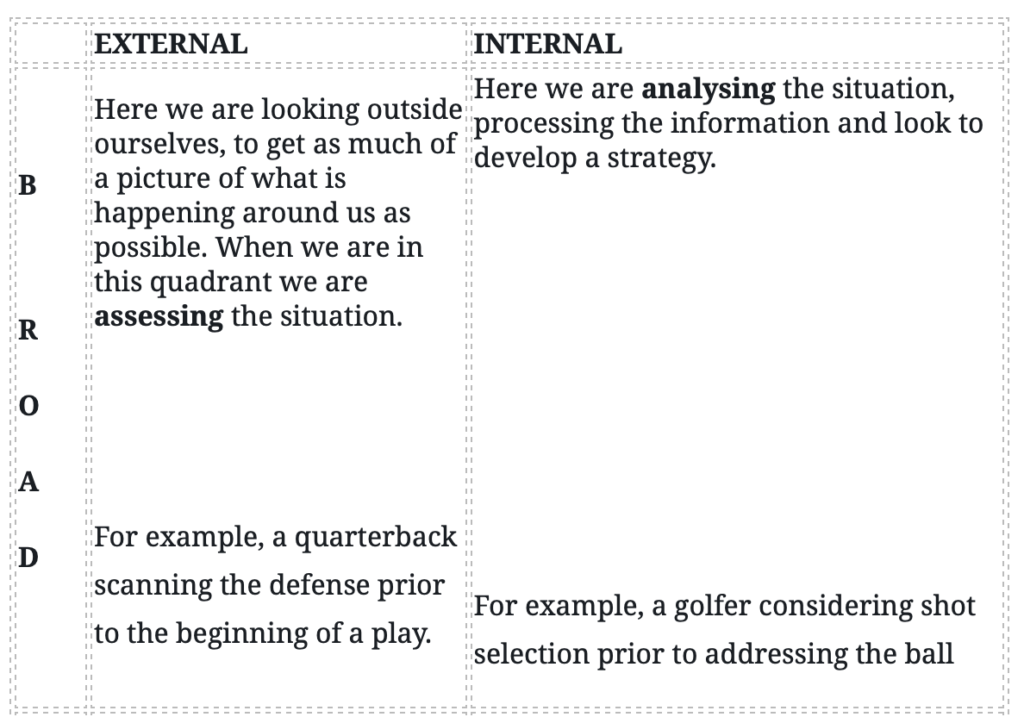Sports can be such a relentless, ever-changing, fast-paced, unpredictable environment which can have a huge impact on our performance in a successful or unsuccessful way.
How much of this can we control or influence? What factors can’t we control? How much control should we strive for? Should we let things be as they are?
Firstly let’s look at the uncontrollable variables, this is where the athlete has no control over or cannot influence the outcome in their favour. Such variables are, the weather condition, opposition team, the venue, fans, how much time left in the game or to some extent the referee or umpire. The list of things not in our control are endless.
Let’s focus on what we can control, which is ‘US’ more specially our Attention and our Focus. Attentional control relates to how an athlete can focus awareness onto the environmental stimuli that are most relevant during the task. The process of attending selectively to the most important cues involve concentration.
Nideffer’s Attentional model is a great start to build athlete awareness and understanding. Nideffer’s approach to attention, can be broken down into two dimensions.
Firstly, width. Here there are two options, broad or narrow. Broad takes in a great deal of information from the environment. Narrow is the opposite, one or two stimuli we focus and select. This dimension shows the change in the amount of information to be processed.
Secondly, direction, here is where the attention is focussed, inwards and onto the psychological state or outwards onto the environment.
These dimensions each occur on overlapping continuums, creating four “quadrants” of attentional focus.


The important piece about this model, you might be thinking what is best? Where do I need to be? At any given point in time there might be places for all of them. So instead of thinking one is right and one is wrong. It’s becoming self-aware, where do I need to be in this moment. What’s value for me right now, can I select and move through the different quadrants I need to be when I need to be there. So coming back to when we say control the controllable, we can control where we are and recognise, right now I might be broad-external but I need to switch to internal-narrow. Then I can take the time, come back to my breath and be where I need to be. Attention and concentration in sport must be adjustable, like a zoom lens on a camera.
Maintaining concentration is critical to performing your best, yet figuring out what to focus on and maintaining the correct attentional focus during performance is not easy. This is where Nideffer’s model can come in handy.
Below are additional exercises that may be helpful in improving one’s ability to concentrate during competition.
Remember athletes who can focus on the task at hand and avoid distractions enjoys the greatest possibility of success. So invest your time and energy into things you can control such as attention. You are never going to be in complete control of everything so why not accept the unpredictability and enjoy what you can control.
OUR PARTNERS